What public media can learn from the model of ‘NJ Spotlight News’
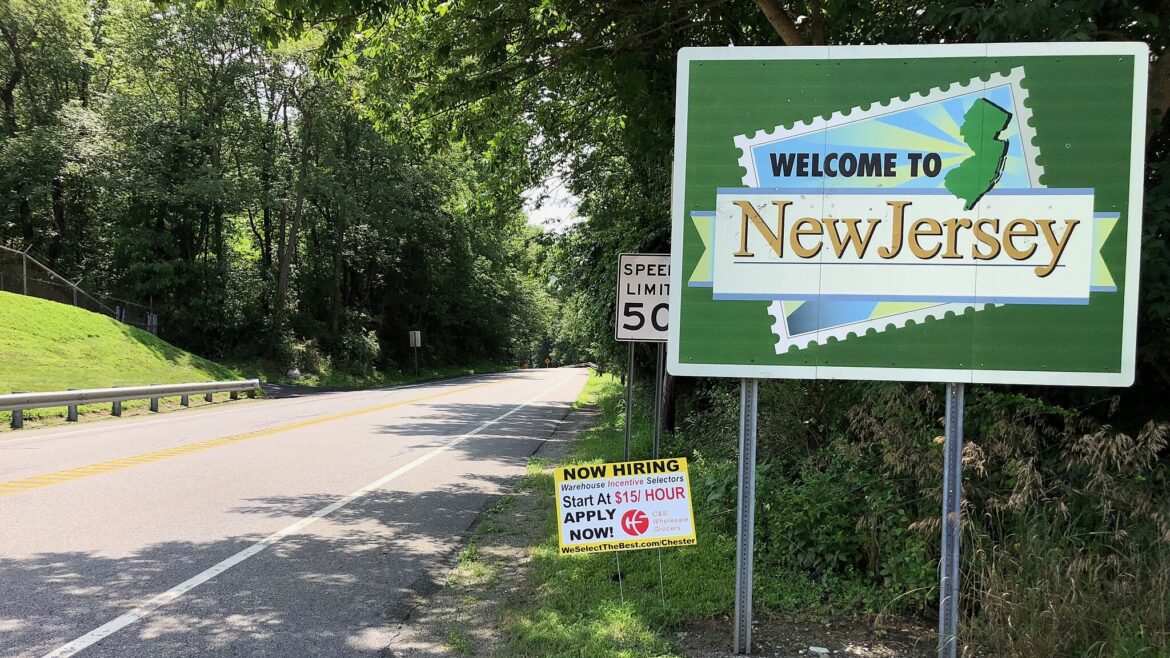
Famartin / Wikimedia Commons
Amid the crisis in local news, there are signs of hope as new media outlets arise to address community concerns and deliver vital information. In their new book, What Works in Community News: Media Startups, News Deserts, and the Future of the Fourth Estate (Beacon Press), Ellen Clegg and Dan Kennedy look at more than a dozen of these innovative journalism projects across the country. In the following excerpt, they examine how the acquisition of NJ Spotlight by New York’s WNET Group helped to expand both organizations’ coverage of the Garden State.
Most news executives would not regard the proliferation of warehouses as the sort of issue that would engage their audience. But that didn’t stop NJ Spotlight News from organizing a virtual event on that seemingly somnolent topic. On a late afternoon in March 2022, a panel of speakers gathered on Zoom to discuss the environmental, social, and racial effects of the state’s boom in warehouses. And though most of the program centered around the sort of bureaucratic arcana that only policymakers could love, there was also an important corrective to some overly sanguine coverage that had recently appeared in the real estate section of The New York Times.
According to the Times, the township of Robbinsville had emerged as a thriving, prosperous community on the strength of a “warehouse hub” that had been built on the outskirts, thus generating tax revenue that paid for a new high school, a municipal building, and a police training facility. But according to the keynote speaker at the Spotlight event, Micah Rasmussen, director of the Rebovich Institute for New Jersey Politics at Rider University, Robbinsville’s success came at a high price. “What the profile didn’t mention was that Robbinsville residents enjoy all the tax benefits of those warehouses with none of their impacts,” Rasmussen said. “Because what they’ve managed to do is outsource them completely to Allentown and Upper Freehold, where they’ve dumped them on their border. The traffic, air pollution, crime, and noise that are all centered on the residential areas of two communities that derive exactly none of their benefits that don’t stop at the municipal border. It’s a nice trick if you can manage it.”
Rasmussen offered exactly the sort of context that is a hallmark of NJ Spotlight News, a digital nonprofit that’s part of NJ PBS, the state’s public broadcasting network. For Spotlight, the event had significant multiplier effects. It was a live forum featuring newsmakers, drawing nearly 250 viewers in real time and still more on the site’s YouTube and Vimeo channels. It was a news story, as highlights from the speakers’ remarks were published on the website. And it was an exercise in civic engagement. Steven Shalit, Spotlight’s director of business development and event producer, told the audience that about a hundred questions had been submitted beforehand. Viewers were encouraged to continue submitting questions, which were forwarded to the panelists after the seventy-five-minute session had concluded. And though this particular forum, arcane as the topic was, did not attract any paying sponsors, many of Spotlight’s events, on COVID-19, public education, wind power, and the like, are a significant source of income. Attendance is free, with businesses involved in those fields paying to promote their services.
“Our charter is to produce news reporting,” Shalit said in an interview. “On the business side, our job is to generate revenue. In the health-care space, or in energy, there’s a lot of money floating around for sponsorships. In things like affordable housing, warehousing, or stormwater management, there’s not a lot of money. But that doesn’t mean we shouldn’t do those topics. So what we’ve done is we’ve looked at the entire group of events as an aggregate, because some of them will be very lucrative, others not so much. But overall, the whole thing is in the black by a wide margin.” What Shalit calls “earned revenue”—event sponsorships as well as advertising on the website and in its newsletters—brings in about $300,000 to $400,000 a year, with the remainder of Spotlight’s annual $1.2 million operating budget comprising donations and grants.
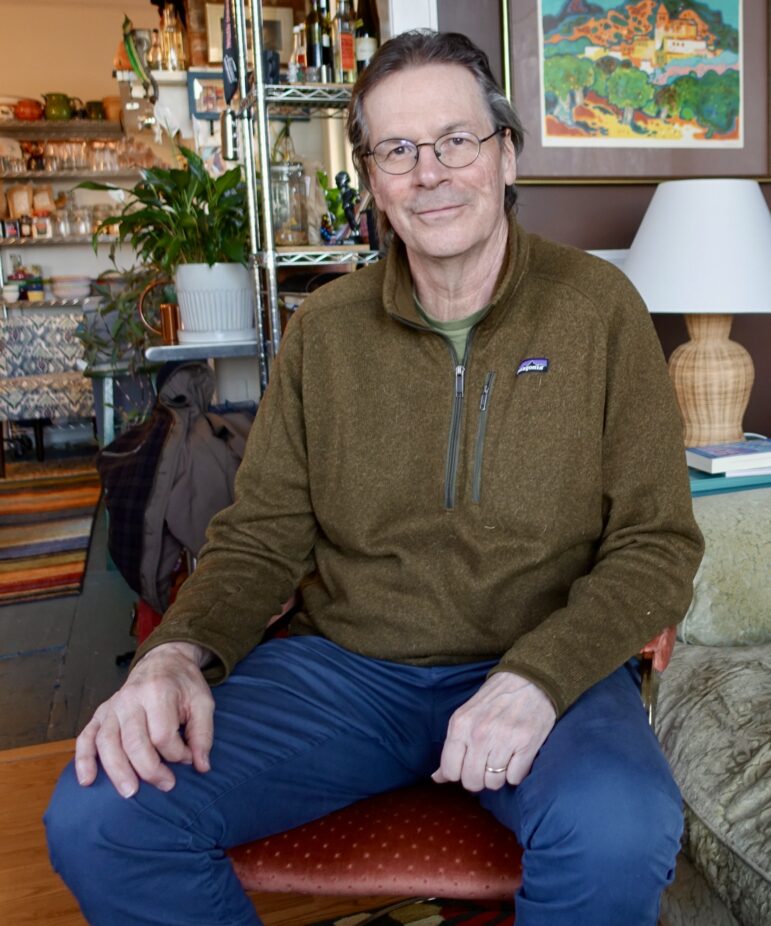
Like many other local and regional news startups, NJ Spotlight News—originally NJ Spotlight—was born amid the turmoil that beset legacy newspapers as they failed to adjust to changes in technology and media consumption. John Mooney, who covered education for The Star-Ledger of Newark, the state’s largest daily, took a buyout in 2008 amid massive cuts that eliminated 151 positions from a newsroom staff of about 330 people. “It was a bigger risk to stay than to leave” is how he described it during an interview at his home in Montclair. He and another reporter who left The Star-Ledger put together a business plan and raised $10,000 in seed money. Mooney’s would-be partner ended up taking a job with Bloomberg instead, but Mooney plowed ahead. With three journalists and a business manager, NJ Spotlight launched in May 2010 under the auspices of the nonprofit Community Foundation of New Jersey.
Spotlight hit its stride journalistically about three to four years after its founding, Mooney said, but it fell short of breaking even, losing about $20,000 to $30,000 annually. The original understanding was that the project would remain affiliated with the Community Foundation for three years, but that stretched to nine years. The foundation, Mooney said, was growing impatient. Sometime around the late 2010s, executives at the WNET Group in New York—the largest public broadcaster in the country and the parent organization of NJ PBS (then called NJTV)—began talking with Mooney about an acquisition. The deal was consummated in 2019 and led to some significant changes. The name of the website became NJ Spotlight News, and the daily half-hour newscast that is produced by NJ PBS took the same name. The newscast is posted on the Spotlight website, both in full and with individual stories broken out. Spotlight reporters—“digital reporters,” in NJ PBS lingo, to distinguish them from the broadcast-side journalists—regularly appear on the newscast to talk about their stories. Both the broadcast and digital sides take part in news meetings so each knows what the other is working on.
For Mooney, who’s the executive director of Spotlight as well as its education reporter, the merger may have saved the news outlet he founded. “The pandemic threw everything for a loop, but even before that it definitely was getting harder,” he said. “It seemed we were struggling more and more to end a little bit in the red as opposed to a lot in the red. There’s no doubt we did this to stay alive. And what I say to our folks is there’s a decent chance we wouldn’t have been here.”
Neal Shapiro, the president and CEO of WNET, told us that his interest in acquiring Spotlight was to provide New Jersey with deeper coverage than NJ PBS could offer on its own. He described a situation unique to New Jersey that virtually everyone we interviewed echoed—that the state, despite its sizeable population (nearly 9.3 million, making it the eleventh-largest in the country), is stuck between the media markets of New York and Philadelphia, leaving it without a media identity of its own. “NJ PBS is the only telecast that serves the entire state,” he said. “And NJ Spotlight was and is one of the leading digital news-gatherers in the country. I was interested in the capacity to put things together that achieve economies of scale that can appeal to consumers—that calls for more ways for broadcasting and digital to play together.” His hope, he added, was that “we will be stronger together than we were apart.”
The story of NJ PBS and NJ Spotlight News suggests that public broadcasting can play a role in bolstering coverage of regional and statewide news. What’s needed to make it work is to bring together different newsroom cultures in a way that serves the audience rather than the bureaucratic imperatives of protecting turf and resisting change. As the journalism researcher Elizabeth Hansen Shapiro has written, “Public media can absolutely help fix market failures in local news, but it will take a simultaneous process of building on its traditional values and dismantling the legacy structures of the current system to create a new local journalism service worthy of ‘the public’ in public media.”
The merger of NJ PBS and Spotlight is not the only example of such a partnership. Colorado Public Radio acquired the digital outlet Denverite a few years ago. Likewise, Billy Penn, a mobile-first news outlet that covers Philadelphia, is now part of public radio station WHYY, and Chicago’s number-two daily newspaper, the Sun-Times, has merged with WBEZ, also a public radio station. What’s taking place in New Jersey, though, is among the more ambitious of these mergers in the way that two news organizations of roughly equivalent stature are working together on television and online. As for the cultural challenges identified by Hansen Shapiro, progress has been made—but folks on both sides of the digital-broadcast divide told us that more needs to be done.
From the beginning, NJ Spotlight News has focused on news about state policy, the budget, the governor’s office, and the legislative process in a manner aimed at political and governmental insiders. When we asked John Mooney to list some high-impact stories that Spotlight has published over the years, he turned the question around. “I think our impact comes in a slower, more methodical way in terms of informing folks and in terms of informing legislators and their staff,” he said. “I can give you a lot of examples of legislators or staff who’ve come to me and said, ‘We didn’t know that.’ And that’s part of watchdog journalism. It’s not sexy, and it makes it very hard, because you’re not the first to ask that. Grantmakers always ask that, and I have to go through the explanation of where I think we do have our impact.”
Because of Spotlight’s emphasis on explanatory journalism, much of its coverage can come across as not especially challenging to those in power. Molly de Aguiar, who was involved in a number of media efforts in New Jersey over the years as the program director of the Geraldine R. Dodge Foundation’s Informed Communities initiative, told us that’s why Dodge cut off funding. “I don’t want to speak ill of Spotlight,” said de Aguiar, who later became president of the Independence Public Media Foundation in Philadelphia. “They’re the only outlet that was really focused on the statehouse, so obviously they’re a very important organization. But overall, what I found frustrating about them, challenging, was that they really were trying to serve the legislature more than they were trying to hold the legislature accountable. At the end, I said to John, whom I admire and like very much, ‘We’re not here to fund journalism that only serves powerful people. That’s just not what we want to do.’”
It’s a criticism that Mooney takes seriously—to a point. Fundamentally, he believes that what strikes de Aguiar as an excessive deference to power is a reflection of Spotlight’s mission to report on the inner workings of government. “Not tough enough? Yeah, I think we could be,” he said. “I’m not saying she’s not right. We’re not vicious, and we don’t go willy-nilly. These policy discussions aren’t typically going to be that kind of confrontational thing. But, yeah, we could be harder.”
Mooney lays out Spotlight’s strategy in terms of threes—three pillars to its business model, three sources of income, three types of audiences. The business model, he explained, was based on having a diverse range of revenues, an experienced staff so that the project’s journalism would be credible, and collaboration with other media outlets. He lamented that the revenues were out of whack, with about a quarter coming from events and advertising, a quarter coming from individual donations, and half from grants. His ideal, based on The Texas Tribune’s model, would be for each to account for about a third. The site was roughly break-even, he added, although he cautioned that Spotlight received administrative support from NJ PBS that made it difficult to know for sure. As for collaboration, any news outlet is free to republish Spotlight’s content with permission. In mid-2022, Mooney was in content-sharing discussions with two major public radio stations, WNET in New York and WHYY in Philadelphia, and was hoping to put together a network with various hyperlocal sites as well. On the audience side, Mooney identified three concentric circles: state government insiders at the center; on the next ring out, those who closely follow state policy, such as local school officials, hospital executives, and people working in clean energy, utilities, and the like; and, on the outer circle, people who simply care about having a deep understanding of public affairs—what Mooney described as “the public media crowd.”
By the spring of 2022, Mooney said, the Spotlight website was attracting a little under two hundred thousand unique visitors each month—down from the height of the COVID pandemic, when traffic could reach as high as five hundred thousand. Those who signed up for Spotlight’s free newsletters received a morning news roundup, evening updates that began as a COVID-centered email and was later expanded to include other topics, and a Saturday wrap-up of the week’s top news. There were about thirty thousand newsletter subscribers, Mooney said, with 25 to 30 percent of those subscribers actually opening those emails. The staff comprised about ten full-timers, ranging from some of the most experienced journalists in the state to a young Report for America corps member who had been assigned to cover mental health in the rural parts of southern New Jersey.
Mooney is essentially the publisher of the site, spending anywhere from half to three-fourths of his time on business issues. The managing editor is John McAlpin, a veteran of the Associated Press and of The Record in Bergen County who got out in the face of cuts by Gannett, the paper’s owner. “I’m the story person,” McAlpin said. “I talk to you about your stories. I help the reporters refine the assignments. I essentially sign off on the assignments. I coordinate the coverage.” Others on the digital side include a projects editor, Colleen O’Dea; an energy and environment reporter, Tom Johnson; a health-care reporter, Lilo Stainton; and a budget and finance reporter, John Reitmeyer. Stainton drew the enormously challenging assignment of covering the pandemic, an experience she called exhausting and emotional, adding: “I was just interviewing someone about how we’re too tired of this pandemic to do the right thing.” Reitmeyer, whose specialty is digging into the arcana of taxes and spending, described his role as illuminating a process that even government officials don’t always fully understand. “A lot of times in New Jersey, what happens is we do things because we’ve always done it that way,” he said. “Well, is that a good way to do it? Is there a better way to do it? Is this actually the best way to do it? So I’m kind of a policy wonk at heart, I think.”
According to Bob Feinberg, a former federal prosecutor who’s vice president and general counsel of WNET, the merger of Spotlight and what was then known as NJTV took place after a slow buildup. Spotlight had been collaborating on the daily newscast, and it seemed natural to seek a closer relationship. “You don’t want to just jump into something like this without a sense of how the two sides are going to work together,” he said, “and I thought, and I think John certainly agreed, that the editorial chops and focus of Spotlight would sync very well with what we were trying to do.” Three years later, NJ PBS and Spotlight were still working to meld the two operations and the two cultures. Perhaps the biggest challenge was how to bring the organizations together so that Spotlight’s ten journalists and NJ PBS’s forty to fifty reporters, producers, and editors formed one unified newsroom. They were getting there—but, as with so many things, the COVID pandemic had slowed those efforts.
On a hot July day in 2022, Jamie Kraft, the senior managing editor of both the broadcast and digital arms of NJ Spotlight News, led us on a tour of the NJ PBS facilities, a short walk from Union Station in downtown Newark. That space had been nearly vacant during the pandemic, even as it was expanded to accommodate what he hoped would eventually become a vibrant in-person operation. The newsroom, which could hold several dozen people, was empty except for Kraft, senior editorial producer Julie Daurio, and news anchor Briana Vannozzi. Through a corridor on the other side of the newsroom was a large, comfortable shared workspace that Kraft hopes will someday entice the digital journalists to come in and work. It too was empty except for Mooney, who came in for part of the day. Kraft, who came to NJ PBS in 2019 after a long career at national outlets such as NBC News, CBS News, CNN, and MSNBC, had been presiding over an unusual newscast since the COVID-induced lockdown in the spring of 2020. Rather than going live, as is standard in the industry and as had been the case at NJ PBS before the pandemic, the program’s segments were pieced together during the afternoon, recorded out of order and then edited into a coherent whole.
The broadcast version of NJ Spotlight News is a half-hour newscast (twenty-six minutes, forty-six seconds to be precise) that is shown on multiple platforms. It gets its first airing at 5:30 p.m. on WNET, the mother ship, and then is shown on NJ PBS’s various broadcast and cable outlets at 6, 7:30, and 11 p.m. It’s also posted on YouTube and on the Spotlight website. That complexity makes it difficult to estimate the size of the audience, although Kraft put the size of the broadcast audience in the “tens of thousands.” Like the digital version of Spotlight, the newscast takes a serious look at state issues, with stories clocking in at three to five minutes. “My whole goal is to give the people of New Jersey a voice in whatever issues are being decided down in Trenton by the legislators that everybody’s elected,” said Kraft, whose portfolio also includes three public-affairs programs and other projects. “Every story we do finds voices of folks that are affected or impacted by whatever is being passed or whatever is being proposed in terms of future legislation or future concepts or programs. The idea is to really try to humanize a lot of the programs that are being put in place by the state.”
It’s a formula that Kraft, Mooney, and others are trying to broaden. As noted earlier, website metrics were down from the height of the pandemic, and Mooney told us he was concerned that Spotlight was not as good at appealing to the third concentric circle of his audience—ordinary people who care about public affairs—as it was to insiders. The person in charge of figuring out how to expand that reach is Joseph Lee, the vice president and general manager of NJ PBS. In a sparsely furnished office at the network’s headquarters, Lee told us he was pushing in a number of different directions to expand the audience. “There is a bit of news burnout. There’s a little bit of people tired of the serious problems, the issues,” said Lee, who came to NJ PBS in 2021 after twenty-eight years of running the public radio operation at Syracuse University. “The question is, are we meeting the basic information needs of the people of New Jersey? What kinds of entertainment, cultural events, places, what’s happening in the sports landscape? I mean, there’s a lot of information out there that we could be serving to broaden our audience a bit. And that is the goal moving forward.”
Several months before our visit, Spotlight had unveiled its first podcast, Hazard NJ, a four-part investigative series on the state’s hazardous-waste sites, a national story going back to the 1980s that just never seems to end. Lee said he was interested in developing more, possibly including a daily news podcast. Hosting debates in the state’s twelve congressional districts as podcasts was also under consideration. “We as a media organization are faced with the fracturing of audiences in this heavily fractured media landscape,” said Lee. “The question for us is how do we continue to serve our audiences, our constituents, in as many ways as possible. Wherever they’re spending their time is where we want to be. So I think audio production, whether it’s podcasting or whether it’s audio stories on our digital platforms, is going to be an important part of how we move forward.”
As with most news organizations, diversity has lagged at Spotlight and NJ PBS. Mooney told us he was acutely aware of the need to add people of color to his staff. “We have only recently started to address that with hiring, because basically we were white out of the gate,” Mooney said. “I didn’t pay enough attention to diversity. I will fully acknowledge that, and it shows in our coverage.” By 2022, there was one Asian American journalist covering social-justice issues on the site’s small staff but no Black or Latino reporters—although Mooney said the site had several Black contract employees. On the broadcast side, Lee is a visible Black leader, but most of the people who work for the network are white. “We are diversifying the applicant pool,” Lee said. “We’re trying to be serious about the people, the issues that we cover, because we want to be an attractive place for people of color to want to come work.”
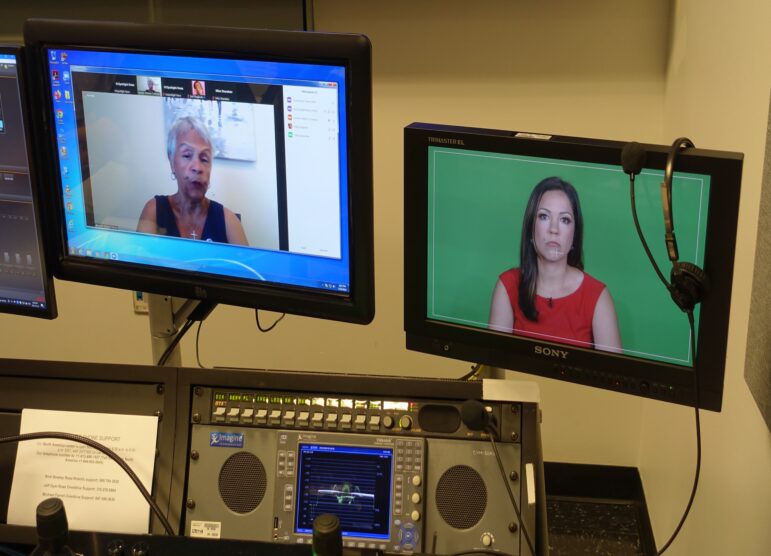
At about 2 p.m. on the day of our visit, Briana Vannozzi took her place in front of the green screen while we observed from the control booth. Coming in remotely was US Representative Bonnie Watson Coleman, a Democrat from the Trenton area. Watson Coleman and sixteen other members of Congress had been arrested a day earlier for protesting outside the Supreme Court following its decision to repeal Roe v. Wade, thus removing constitutional protections for abortion rights. Providing state and local context for national issues is a staple of Spotlight’s newscast and website, so Watson Coleman was an important get.
“I’m glad to see that you’re well, that you’re no longer in custody,” Vannozzi began. “Of course, that’s what everyone’s talking about. But, really, the question here is whether or not you feel the ideological makeup of this court is a threat to what some people would consider some basic rights.”
“Absolutely. I think that this is a particularly politicized court,” Watson Coleman replied. “I believe that their ideological embracement is detrimental to our privacy and the rights that have already been established.” And, with that, they were off and running with a conversation that lasted nearly four and a half minutes.
Interviews are a key part of the evening broadcast; Vannozzi often talks with two or three newsmakers and journalists from Spotlight and other news organizations. It’s an aspect of the newscast that has actually become easier during the pandemic, as fears that viewers would be put off by the lower video and audio production standards of Zoom have given way to a new reality. Both Kraft and Vannozzi said they believed there was no going back, even if COVID somehow magically disappeared. “We’ve found that we can include a much larger cast of characters in our pieces now,” Vannozzi said. “When I was driving up and down the state to do interviews, every single one of them in person, just logistically, I only had time to get to maybe three people to put a story on the air for 5:30. Now we can interview three people within thirty minutes.”
Vannozzi generally arrives at work at about 9:15 a.m. By then she’s already been in contact with Kraft and Julie Daurio. She spends the morning taking part in news meetings to find out what people are working on, to make suggestions, and to see how stories in the works from the digital side of Spotlight can be integrated into the broadcast. She and Kraft decide the order in which the stories should appear. She’s in touch with reporters and writes the script, drawing on her long experience as a reporter in New Jersey to add background and context. Vannozzi has worked for the newscast in various capacities since 2012 and became the anchor in 2020.
Very few public media operations offer a television newscast. When you think of public broadcasting and news, you think of radio, with national and international reports from NPR that are interspersed with local updates. In that regard, the Spotlight newscast is unusual. Vannozzi believes it fills an important void. “When New Jersey is covered, it’s really ‘it bleeds, it leads,’” she said. “We sat down when we did our merger and talked about how we wanted to revamp—everything, from how we go about selecting stories to how we cover them. We decided we may be first sometimes, but that’s not going to be our goal. Our goal is to be right and to provide analysis that you’re not going to find anywhere else.”
NJ Spotlight News is a leading example of how a venerable public broadcasting station and a digital startup can come together to fill a vital need. Spotlight is not the only news organization in New Jersey to provide coverage of what the governor, the legislature, and other state agencies are up to. But it is the only free, nonpartisan service whose mission is to examine and explain the inner workings of government for insiders and a broader audience alike. Spotlight is not a solution to the local news crisis; a regional news outlet can’t delve into what’s taking place at the hyperlocal level. New Jersey has taken some steps to solve that problem, through research, government funding, and innovative community journalism projects. What Spotlight can do is serve as a beacon for other public broadcasters on how to provide high-quality regional and statewide news.
Excerpted from What Works in Community News Media Startups, News Deserts, and the Future of the Fourth Estate by Ellen Clegg and Dan Kennedy (Beacon Press, 2024). Reprinted with permission from Beacon Press.


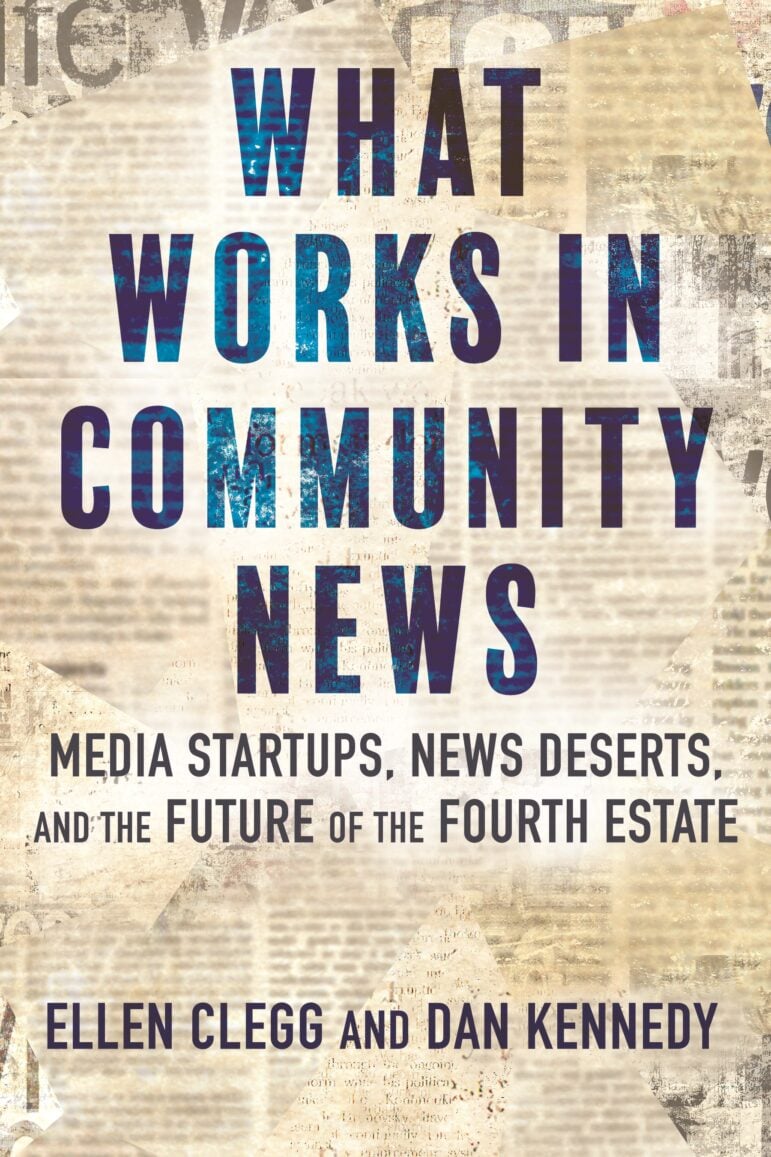


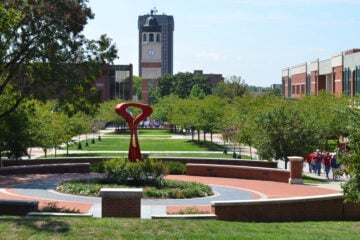


Dan Kennedy & Ellen Clegg are like EF Hutton: when they talk, everyone should listen. This is great stuff!